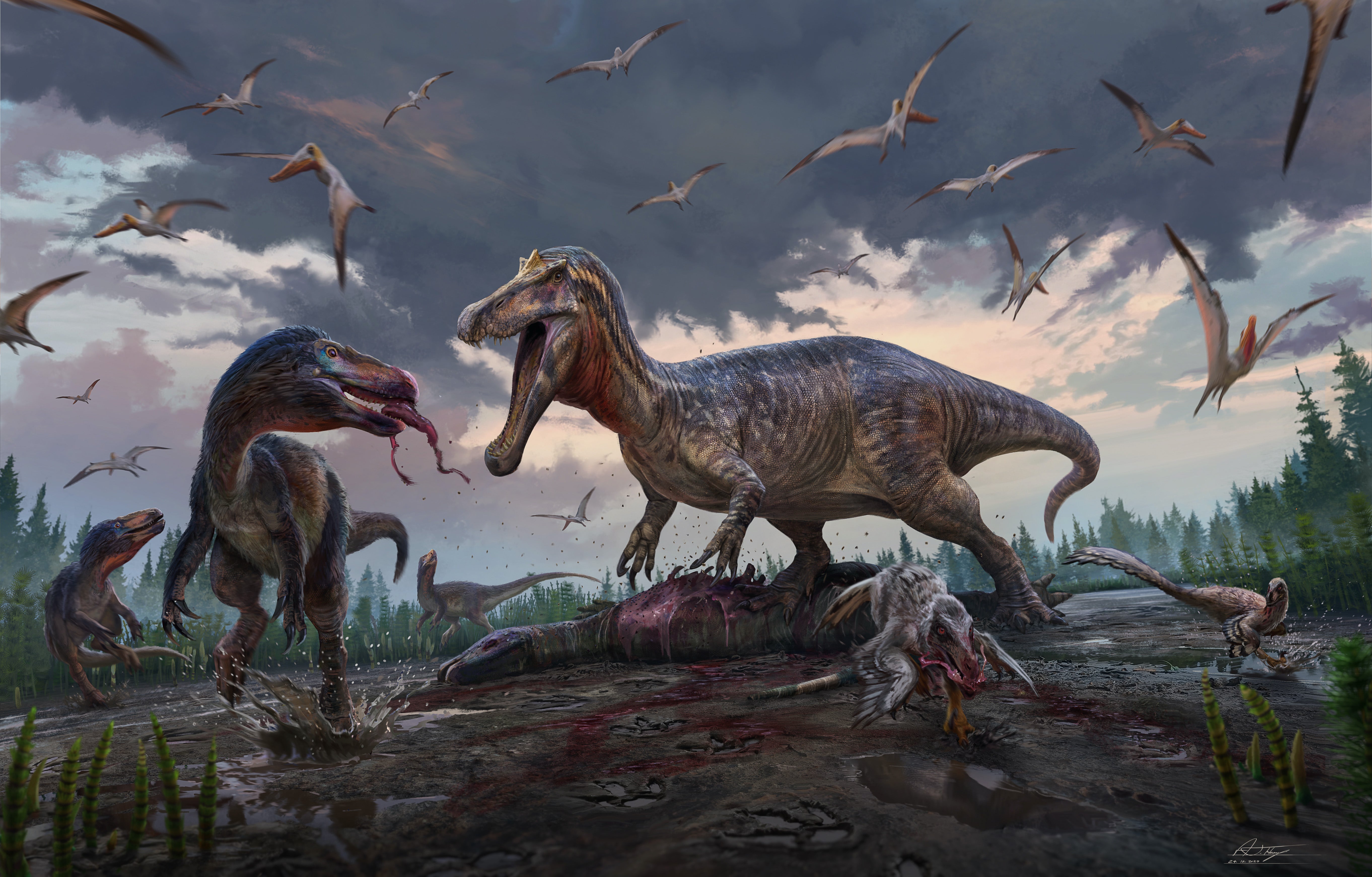
The discovery of sets of prehistoric teeth has revealed that groups of meat-eating dinosaurs stalked the East Sussex coast 135 million years ago.
The research, led by the University of Southampton, has revealed that a “whole community of predators” including tyrannosaurs, spinosaurs and members of the velociraptor family would have been found in the Bexhill-on-Sea area.
Dr Chris Barker, lead author of the study published in Papers in Palaeontology, said it was the first time that tyrannosaurs had been identified in sediments of this age and region.

He said: “Meat-eating dinosaurs – properly called theropods – are rare in the Cretaceous sediments of southern England.
“Usually, Isle of Wight dinosaurs attract most of our attention. Much less is known about the older Cretaceous specimens recovered from sites on the mainland.”
He explained that theropod teeth, like those found by collector Dave Brockhurst at Ashdown Brickworks, were complex and varied in size, shape, and in the anatomy of their serrated edges.
The team is working with colleagues at London’s Natural History Museum, the Hastings Museum and Art Gallery, and the Museo Miguel Lillo De Ciencias Naturales to identify the species.
He added that the tyrannosaurs that existed here would have been around a third of the size of their famous cousin Tyrannosaurus rex, and would likely to have hunted small dinosaurs and other reptiles in their floodplain habitat.
Dr Darren Naish, a co-author of the study, added: “Southern England has an exceptionally good record of Cretaceous dinosaurs, and various sediment layers here are globally unique in terms of geological age and the fossils they contain.
“These East Sussex dinosaurs are older than those from the better-known Cretaceous sediments of the Isle of Wight, and are mysterious and poorly known by comparison.
“We’ve hoped for decades to find out which theropod groups lived here, so the conclusions of our new study are really exciting.”







